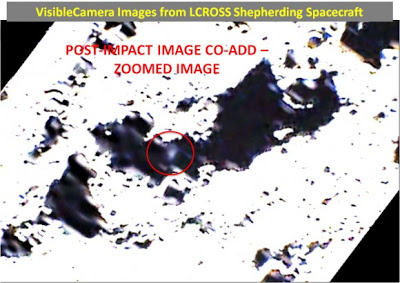Astronomy

![Reblog this post [with Zemanta]](astronomy/astronomy-564fd7fa264ab.png?x-id=fefcfc53-a54d-4141-b50c-411afccc2dc5)
- Amazing Enceladus Images
Image of plume from far away. In my previous post Happy Halloween from Cassini Spacecraft Team i mentioned about Cassini spacecraft going to the Moon of Saturn, Enceladus on 2th November, 2009. Cassini has captured some amazing images of the plumes...
- Was Nasa "moon Bombing" A Success ?
NASA's Lunar CRater Obsevation and Sensing Satellite (LCROSS) impacted the Moon's crater Cabeus on October 9, 2009 near the South Pole to find if the permanently shadowed crater might be hiding water. NASA previously eatimated that the debris...
- Moon "bombing" To Probe Water
On Friday that is today 9th September, 2009 a NASA spacecraft known as Centaur will crash on the South pole of Moon with a force that will throw 350 tonnes of lunar debris and create a 13-foot-deep-crater. Soon four minutes after the crash another spacecraft...
- Water Molecules On Lunar Surface
NASA scientists have discovered water molecules in the polar regions of the moon. Water molecules are greater than predicted , but still relatively small. Hydroxyl, a molecule consisting of one oxygen atom and one hydrogen atom, also was found in the...
- Lcross Lunar Impact
The Lunar CRater Observing and Sensing Satellite (LCROSS) mission was designed to find out more about the presence of water on the Moon. The biggest component of the LCROSS mission will be to perform an impact on the lunar south pole, which will take...
Astronomy
Moon crash plume visible to spacecraft

The image of impact plume of "moon bombing" by NASA.
In my previous blog posts Moon bombing to probe water and Was NASA moon bombing a success i told you about "moon bombing" by NASA .
NASA had said that observers from Earth will be able to see the plume of " Moon bombing'' with their telescopes but no one was able to see that from Earth.
Acoording to NASA nine instruments on board the LCROSS spacecraft captured the entire crash sequence of the Centaur impactor before the spacecraft itself impacted the surface of the moon.
From images and data, the team was able to determine the extent of the plume at 15 seconds after impact was approximately 6-8 km in diameter. The data which which the spacecraft has gathered is of high quality.
In my previous blog posts Moon bombing to probe water and Was NASA moon bombing a success i told you about "moon bombing" by NASA .
NASA had said that observers from Earth will be able to see the plume of " Moon bombing'' with their telescopes but no one was able to see that from Earth.
Acoording to NASA nine instruments on board the LCROSS spacecraft captured the entire crash sequence of the Centaur impactor before the spacecraft itself impacted the surface of the moon.
From images and data, the team was able to determine the extent of the plume at 15 seconds after impact was approximately 6-8 km in diameter. The data which which the spacecraft has gathered is of high quality.
![Reblog this post [with Zemanta]](astronomy/astronomy-564fd7fa264ab.png?x-id=fefcfc53-a54d-4141-b50c-411afccc2dc5)
- Amazing Enceladus Images
Image of plume from far away. In my previous post Happy Halloween from Cassini Spacecraft Team i mentioned about Cassini spacecraft going to the Moon of Saturn, Enceladus on 2th November, 2009. Cassini has captured some amazing images of the plumes...
- Was Nasa "moon Bombing" A Success ?
NASA's Lunar CRater Obsevation and Sensing Satellite (LCROSS) impacted the Moon's crater Cabeus on October 9, 2009 near the South Pole to find if the permanently shadowed crater might be hiding water. NASA previously eatimated that the debris...
- Moon "bombing" To Probe Water
On Friday that is today 9th September, 2009 a NASA spacecraft known as Centaur will crash on the South pole of Moon with a force that will throw 350 tonnes of lunar debris and create a 13-foot-deep-crater. Soon four minutes after the crash another spacecraft...
- Water Molecules On Lunar Surface
NASA scientists have discovered water molecules in the polar regions of the moon. Water molecules are greater than predicted , but still relatively small. Hydroxyl, a molecule consisting of one oxygen atom and one hydrogen atom, also was found in the...
- Lcross Lunar Impact
The Lunar CRater Observing and Sensing Satellite (LCROSS) mission was designed to find out more about the presence of water on the Moon. The biggest component of the LCROSS mission will be to perform an impact on the lunar south pole, which will take...
